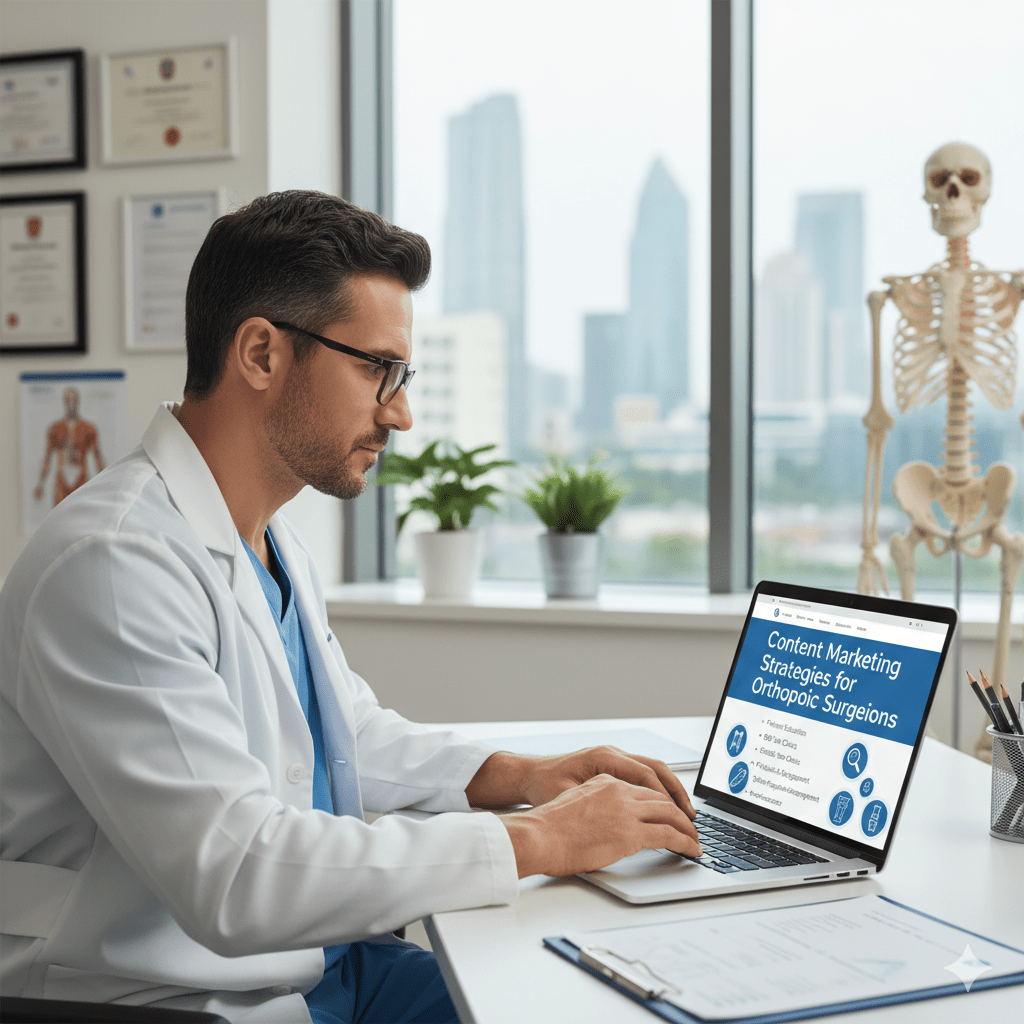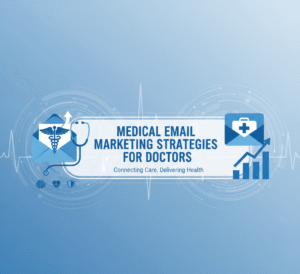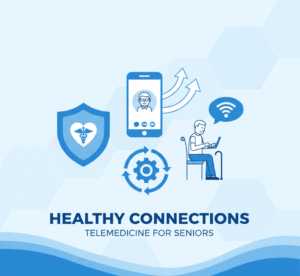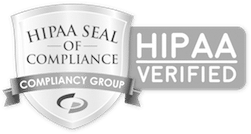“Leverage educational guides, animated videos, and patient stories to demystify procedures and build patient confidence with Content marketing for orthopedic surgeons.”
The words “orthopedic surgery” carry significant weight. For a patient, they can conjure a mix of hope for a pain-free future and a wave of apprehension. Questions flood their minds. How invasive is the procedure? What will the recovery be like? Am I choosing the right surgeon? This uncertainty is a significant hurdle. In the world of orthopedic surgery, the single most crucial element you can build with a potential patient—even before they meet you—is trust.
Many orthopedic practice websites, however, function as little more than a digital business card. They list procedures like knee replacement or ACL repair, but do little to address the profound fear and uncertainty that patients feel. This is a missed opportunity. Today’s patients are not passive recipients of care; they are active participants in their own healthcare. They turn to the internet to find answers, and what they find there will shape their decisions and their confidence in a provider.
This is where a strategic approach to Content marketing for orthopedic surgeons becomes transformative. It’s about systematically using educational content to demystify complex procedures, manage expectations, and position you not only as a skilled surgeon but also as a compassionate and authoritative guide. This guide will explore exactly how to build a content library that overcomes patient apprehension, builds profound trust, and attracts well-informed patients who are ready and confident to move forward with care.
Section 1: The Patient’s Perspective: Understanding the Fear Factor
Before we dive into the “how,” we must first understand the “why.” Why is educational content so uniquely powerful in orthopedics? It’s because you are directly addressing the core anxieties that can cause a patient to delay care or choose another provider.
The Fear of the Unknown
Patients often have a vague, and sometimes frightening, mental image of what surgery entails. They hear terms like “arthroscopy,” “arthroplasty,” or “internal fixation” and feel overwhelmed. Their primary fear is of the procedure itself. An effective content strategy meets this fear head-on with clarity and simple explanations, turning the unknown into the understood.
The Fear of Pain and Recovery
The second major fear revolves around the aftermath. How much will it hurt? How long will I be off my feet? Will I ever get back to my favorite activities? Patients are not only worried about the day of surgery, but also concerned about the weeks and months that follow. Patient education content that clearly outlines the recovery process, week by week, provides a roadmap for patients to follow. This roadmap replaces anxiety with a sense of control and preparedness.
The Fear of a Bad Outcome
Every surgical patient worries about the outcome. What if it doesn’t work? What if I’m worse off than before? Horror stories amplify this fear that they may have read on random internet forums. Your content must counter this unreliable information with realistic, positive, and evidence-based success stories and data. Building patient trust online means becoming the most reliable source of information they can find.
Information Overload from Unreliable Sources
Without a trusted source to turn to, patients are left to navigate the internet on their own. They may end up on a generic medical website that lists every possible complication, or a forum filled with worst-case scenarios. This often does more harm than good. By creating your own comprehensive library of content, you provide a safe and authoritative space for them to find the answers they need. You become their trusted source, cutting through the noise and anxiety. Your orthopedic surgery marketing should be a service in itself, guiding patients toward clarity and confidence.
Section 2: Your Digital Consultation Room: A Content Strategy for the Patient Journey
A successful content strategy doesn’t just create random articles. It strategically guides a potential patient through their entire decision-making process, from the first twinge of pain to scheduling a consultation with you. Your website should function as a virtual consultation room, providing answers to questions 24/7.
Stage 1: The Problem-Awareness Stage (“My Knee Hurts, What’s Going On?”)
At this initial stage, individuals may experience symptoms but are often unaware of the cause or whether surgery is even a possibility. They are searching for information about their condition. Your content should be educational and diagnostic in nature, rather than overtly salesy.
- Content Focus: Explain conditions, symptoms, and non-surgical options.
- Keywords to Target: These are often symptom-based or condition-focused.
- “Sharp pain in the shoulder when lifting the arm”
- “Signs of osteoarthritis in the hip”
- “What is a torn meniscus?”
- “When to see a doctor for back pain”
- “Non-surgical treatments for knee pain”
- Content Formats:
- In-depth Articles: Write clear, easy-to-understand articles explaining common orthopedic conditions (e.g., “Rotator Cuff Tears: Causes, Symptoms, and Treatment Options”).
- Symptom Checkers (as blog posts): A post titled “5 Signs Your Knee Pain Might Be Serious” can be very effective.
- Short Videos: A surgeon briefly explains the difference between arthritis pain and a ligament injury.
Stage 2: The Solution-Exploration Stage (“I Might Need Surgery, What Does That Involve?”)
Once a patient understands their condition and recognizes that surgery might be necessary, they enter a research-intensive phase. This is your prime opportunity to demystify procedures and build trust. Your content needs to be detailed, reassuring, and comprehensive. This is the heart of your knee replacement or hip replacement marketing and content strategy.
- Content Focus: Detailed explanations of surgical procedures, recovery timelines, and benefits.
- Keywords to Target: These are procedure-specific and often include terms like “recovery,” “procedure,” or “benefits.”
- “Total knee replacement surgery explained”
- “Anterior vs. posterior hip replacement”
- “ACL surgery recovery timeline”
- “What to expect after shoulder arthroscopy”
- “Benefits of robotic-assisted knee surgery”
- Content Formats:
- Procedure Guides: Create a dedicated, in-depth page for each core procedure you perform. Break it down into sections: Who is a candidate? How to prepare for the surgery? What happens during the procedure (explained simply)? What does the recovery process look like week by week?
- Animated Explainer Videos: A short, 2D animated video showing how a joint is replaced can be incredibly effective and less intimidating than actual surgical footage.
- Downloadable Pre-Op Checklists: A guide on “How to Prepare Your Home for a Smooth Recovery After Hip Surgery.”
Stage 3: The Provider-Selection Stage (“Is This the Right Surgeon for Me?”)
The patient is now ready to make a choice. They are looking for proof of your expertise, experience, and patient outcomes. Your content must now focus on why you and your practice are the best choice for their care. This is about establishing medical authority and human connection.
- Content Focus: Showcasing results, expertise, and patient satisfaction.
- Keywords to Target: These are often branded or include local modifiers and terms like “best” or “top.”
- “[Your Name] reviews”
- “Best orthopedic surgeon in [Your City]”
- “Top knee replacement surgeon near me”
- “Sports medicine specialist in [Your State]”
- Content Formats:
- Patient Testimonial Videos: This is the single most powerful type of content at this stage. A video of a former knee replacement patient walking without a limp or a shoulder surgery patient throwing a ball again is more convincing than any marketing copy.
- Detailed Surgeon Bios: Go beyond your CV. Write a “My Philosophy of Care” page. Share why you chose orthopedics and what your commitment to your patients is.
- Case Studies: Anonymously detail a patient’s journey, from their initial problem to their successful surgical outcome and return to activity.
- “About Our Technology” Page: If you utilize advanced technologies like Mako or ROSA, create a page that explains what they are and how they benefit the patient.
Section 3: Your Content Toolkit: The Formats that Build Confidence
A robust content plan uses a variety of formats to engage patients and build trust. Here are the essential building blocks for an orthopedic surgeon’s content library.
1. The Cornerstone: In-Depth Procedure Guides
For every major procedure you perform (such as TKA, THA, ACL repair, and rotator cuff repair), you should have a comprehensive guide available on your website. This page should be the most comprehensive and user-friendly resource on the topic for a layperson. Structure it logically:
- Anatomy Primer: Begin with a straightforward explanation of the joint and its associated issues
- Who is a Good Candidate?: Clearly explain the criteria for the surgery.
- The Procedure Explained: Use simple language and analogies to clarify the process. Avoid overly technical jargon. Explain the goals of the surgery.
- Technology and Techniques: Explain your approach (e.g., minimally invasive, robotic-assisted) and its benefits.
- The Recovery Roadmap: This is crucial. Break down the recovery process into phases: The first 24 hours, the first week, weeks 2-6, months 2-6, and one year out. What can they expect at each stage?
- FAQs: Answer the most common questions you get from patients about that specific procedure.
This type of content is invaluable for SEO for orthopedic surgeons and for patient reassurance.
2. The Trust Accelerator: Healthcare Video Marketing
Video is uniquely powerful in healthcare. It allows patients to see and hear from you and your other patients, creating a human connection that text alone cannot.
- Patient Testimonials: As mentioned earlier, this is your most valuable asset. Don’t just have them say, “Dr. Smith is great.” Guide them to tell their story: What was their life like before surgery? What was their fear? What was the process like? What can they do now that they couldn’t do before? This is the heart of sports medicine marketing and joint replacement marketing.
- Surgeon Q&A Videos: Sit down in a comfortable setting (not a sterile exam room) and answer 3-5 common questions on video. For example, “The Top 5 Questions I Get About ACL Recovery.” This makes you approachable and conversationally shows your expertise.
- Animated Procedure Explainers: Commission simple animations that show the mechanics of a procedure. This educates patients visually without being graphic.
3. The Practical Tools: Downloadable Guides
Downloadable resources offer tangible value and demonstrate that you are considering the patient’s entire journey.
- Pre-Operative Checklists: “Your Guide to Preparing for Knee Replacement Surgery.” This could include tips on arranging transportation, setting up a “recovery station” at home, and what to pack for the hospital.
- Post-Operative Exercise Guides: “Phase 1 Recovery Exercises for After Shoulder Surgery.” A simple PDF with pictures and descriptions of safe, surgeon-approved exercises is beneficial.
- Question Lists: “10 Questions to Ask Your Surgeon Before a Hip Replacement.” Providing patients with the tools to be their own best advocates builds immense trust.
These guides also serve as “lead magnets.” A patient provides their email address to download the guide, allowing you to send them further helpful information as they consider their options.
Section 4: Ensuring Your Expertise is Visible: SEO and Authority
Creating world-class patient education content is pointless if it cannot be found. Your content strategy must be fully integrated with a strong plan for Search Engine Optimization (SEO).
SEO for Orthopedic Surgeons: A Targeted Approach
- Keyword Strategy: Your focus should be on “high-intent” keywords. These phrases indicate that a user is actively seeking a solution. Examples include:
- [Procedure Name] surgeon in [Your City] (e.g., “ACL surgeon in Yangon”)
- recovery after [Procedure Name] (e.g., “recovery after total hip replacement”)
- best doctor for [Condition] (e.g., “best doctor for knee arthritis”)
- On-Page Optimization: Every piece of content you create must be optimized. This means incorporating your target keyword naturally into the page title, headings, and throughout the text.
- Local SEO: Ensure your Google Business Profile is fully optimized with your correct name, address, phone number, services, and photos. Encourage satisfied patients to leave reviews, as these are a major local ranking factor.
Establishing Medical Authority with Google (E-A-T)
For medical websites, Google uses a strict set of quality guidelines known as E-A-T: Expertise, Authoritativeness, and Trustworthiness. Your content must excel in all three areas.
- Expertise: Content should be written or reviewed by a qualified medical professional. Include a clear author bio on every article with the surgeon’s name, credentials, and a link to their complete profile.
- Authoritativeness: Your website becomes an authority by being comprehensive and by earning links from other reputable sites (e.g., a link from your affiliated hospital’s website or a local news article about your practice).
- Trustworthiness: A secure website (HTTPS), clear contact information, and positive patient reviews all contribute to trustworthiness. Your content must clearly and transparently disclose both the benefits and risks associated with any procedure. Discussing potential complications openly and honestly builds far more trust than ignoring them.

InvigoMedia: Crafting Content That Builds Confidence and Drives Growth
As a dedicated orthopedic surgeon, your focus is—and should be—on clinical excellence and patient outcomes. You are an expert in the operating room, not necessarily in keyword research, video production, and SEO. Yet, to thrive in today’s digital landscape, a robust online presence is no longer optional.
This is where InvigoMedia provides a critical partnership. We are a specialized healthcare marketing agency with deep expertise in Content marketing for orthopedic surgeons. We understand the unique challenges of your field, the psychology of your patients, and how to translate your clinical knowledge into a powerful engine for trust and practice growth.
Here’s How We Help You Build Your Digital Authority:
- Custom Content Strategy: We don’t use templates. We begin with a deep dive into your practice, including your sub-specialties (such as sports medicine and joint replacement), your philosophy of care, and your local market. We then develop a bespoke content strategy designed to attract your ideal patients.
- Expert Content Creation: Our team consists of skilled medical writers, video producers, and marketing strategists. We know how to distill complex medical topics into explicit, empathetic, and reassuring content. From writing in-depth, SEO-optimized procedure guides to producing compelling patient testimonial videos, we handle the entire creation process.
- Specialized SEO for Orthopedic Surgeons: We ensure that the world-class content we create gets found by the patients who need it most. Our SEO experts implement advanced strategies to rank your practice for high-value keywords, driving qualified traffic to your website and increasing the number of consultation requests.
- A Focus on Quality Consultations: Our goal is not just to get your phone to ring. It is to ensure that when it does, the patient on the other end is educated, confident, and prepared. By building patient trust online before the first visit, we help you have more productive, higher-quality consultations, leading to better patient experiences and outcomes.
Your surgical skill deserves to be matched by a marketing strategy that reflects the quality and compassion of your care. Let InvigoMedia build the content libra that reassures your patients and solidifies your reputation as the leading orthopedic expert in your community.
your communitygoMedia today for a consultation. Let’s start transforming your online presence into your most powerful patient education tool.
Frequently Asked Questions (FAQs)
Q1: How do I discuss the risks of surgery in my content without scaring patients away?
A1: Transparency is the key to trust. Address risks directly, but frame them within the context of your expertise in mitigating them. For example, you can write, “Like any major surgery, there are risks such as infection. Here at our practice, we take specific steps to minimize this risk, including…” Being honest and proactive shows you are a trustworthy guide.
Q2: Is it a HIPAA violation to post patient testimonial videos?
A2: It is only a violation if you do not have proper consent. For any patient story, photo, or video you share, you must have them sign a specific, detailed media consent form that clearly outlines how and where their story will be used. Always prioritize patient privacy and follow strict protocols.
Q3: My practice is primarily referral-based. Do I still need to invest in content marketing?
A3: Yes, absolutely. Even when a patient is referred to you by their primary care physician, their journey almost always includes an online search. They will look you up to learn more about you and your practice. A website rich with educational content and patient testimonials will solidify that referral and give them the confidence to book the appointment. A weak online presence can cause a referred patient to seek a second opinion.
Q4: How long does it typically take to see new patients from a content marketing strategy?
A4: Content marketing is a long-term strategy that builds a permanent asset for your practice. You can expect to see initial traction, including increased website traffic and improved keyword rankings, within three to six months. Significant increases in new patient inquiries from your content efforts typically begin to show between 6 and 12 months as your library of content grows and your website’s authority increases.
Q5: What’s more important for an orthopedic surgeon: written articles or videos?
A5: Both are critically important and serve different purposes. Written articles (procedure guides, blog posts) are essential for SEO and for providing detailed, comprehensive information that patients can read at their own pace. Videos are unparalleled for building an emotional connection and demonstrating outcomes. The most effective strategy uses a potent combination of both.
Q6: Why shouldn’t I just run Google Ads instead of creating all this content?
A6: Google Ads can be a good short-term tactic, but it’s like renting an audience. The moment you stop paying, your visibility disappears. Content marketing is like buying an asset. A well-written guide or a powerful testimonial video can attract patients for years to come. A robust strategy often uses content as its foundation and may utilize ads to promote that great content, thereby combining the best of both worlds.













